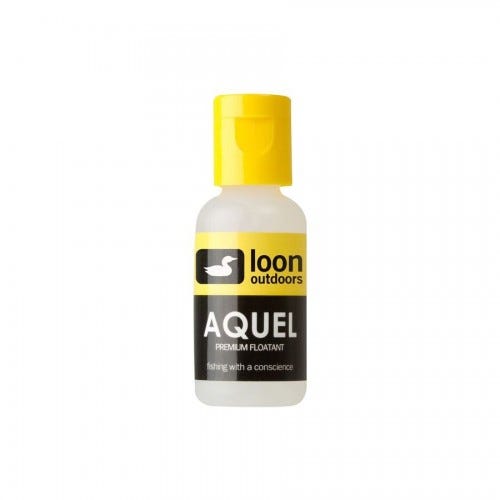When to Use What: Fly Fishing Floatants Versus Shakes

The fly fishing industry today is flooded with more options of floatants and dry shakes than the average fisherman can comprehend. With so many different types of gels, liquids, dusts, and drying-beads available, stopping at the local flyshop for a quick in-and-out purchase may take longer than expected.
Hastily grabbing the wrong floatant off the shelf may get you out on the water quicker, but will cause more headaches than a good beer can relieve. For those who don't know, some floatants are actually better than others.
The performance of floatant correlates directly to the type of application you intend and the product you select. Here are a few pointers to consider the next time your gel goes dry.

Fly Fishing Gels: What are These?
Various gels continue to be the most popular floatant used by fly fisherman today. Why? The answer is simple. They are relatively cheap, easy to use, and they work! Well... most of the time. This is when the "type of application" I discussed earlier comes into play. If you are fishing an evening caddis hatch with your favorite Elk Hair Caddis, than Gink/ Loon Aquel/ Tiemco Dry Magic will do the trick. That applies to all elk hair, deer hair, and foam dry flies for that matter. Which coincidentally is what most fly fisherman use. If flies with CDC is what you prefer, than you might want to consider other alternatives. Gels tend to ruin the "fluffiness" of CDC, and turn your beautiful fly into a glop of feathers.
Shop for these products online here.
Most trout don't like to sip a gunk of Gink. Keep in mind that you don't need to soak your fly with floatant to keep it afloat. A small drop of the stuff will keep your fly floating happily as long as you rub it throughout the fly. Always apply the gel to the fly BEFORE you put fly on water. If you spread the floatant on the fly after it is wet, all you are doing is securing the moisture to the fly with a waterproof liquid. Apply when needed, and be sure to dry off the fly before your re-apply.

Dusts in Fly Fishing: Wrist Flick
Dusts have become an increasing popular product over the past decade. Loon Dust, Frogs Fanny, Top Ride, Doc’s Dry Dust, whatever you want to call them, they all work. From what I can see, dusts have advantages and disadvantages. One major advantage is that it works great with all CDC flies. The CDC retains its fluffy profile, and floats better than a cork on a drift boat. As far as disadvantages, there are a couple. For starters, there is nothing more frustrating than trying to dust your fly on a breezy day.
We got great options for these products online that you can order today.
Open the bottle and POOF, half of the bottle is taken by the wind. Look on the bright side, at least you know which direction the wind is going now. A second disadvantage is that the dust tends to last for only 1-2 fish. Once the trout eats your fly, it drowns the CDC with water, and will need a good drying off before re-applying the dust. Although I can think of more disadvantages than advantages, dusts continue to be the best product on the market today for CDC. Personally, I still love various dusts, and always have a bottle on board when planning to fish with CDC.

Dry Shakes: Another Floatant Option
Let’s say you’re having a “fish on every cast” evening, which should be every evening if you shop at North 40 Flyshop (experience may vary). The trout just keep eating your dry fly, and soaking it with water. Forcing you to do 10-15 false casts in order to dry off your fly. Although, this method has been passed down from generation to generation, it stops here. Simply throw your fly (still tied onto the leader) into the dry shake bottle, and shake away. The dry beads will completely dry off your fly in seconds.
Here is Loon's Easy Dry shake option you can buy online.
Then apply your favorite floatant, and slay away. My personal favorite product is Easy Dry by Loon Outdoors. The dry beads turn blue to pink when it is time to replace the bottle. Dry shakes are great for drying your fly, but keep in mind that they are not a floatant. You will need a separate product to float your fly.

Hydrostop: Dry it when you Tie it.
Want to eliminate the need for floatant entirely? This is where Hydrostop by Loon Outdoors comes into play. This water-thin liquid is built to treat your freshly tied flies, yarn, and can even waterproof boots! Simply drop a few dry flies in the container, and allow it to soak for 5 minutes. Then remove the flies, hang’em up, and allow to dry overnight.
The water repellent coating is permanent, and does not require additional floatant. Why wasn’t this invented years ago?
Want to keep your flies dry before you even hit the water? Then order Hydrostop here.
